An All-in-One Guide to the finest types of elm trees scattered throughout the world.
Elm trees are large shade trees that are most often found near streams or in swamps near the rivers. There are about 35 species of elm trees that belong to the genus Ulmus. Eight of these species are native to North America while the rest are widely distributed in the temperate and tropical regions of Europe and Asia.
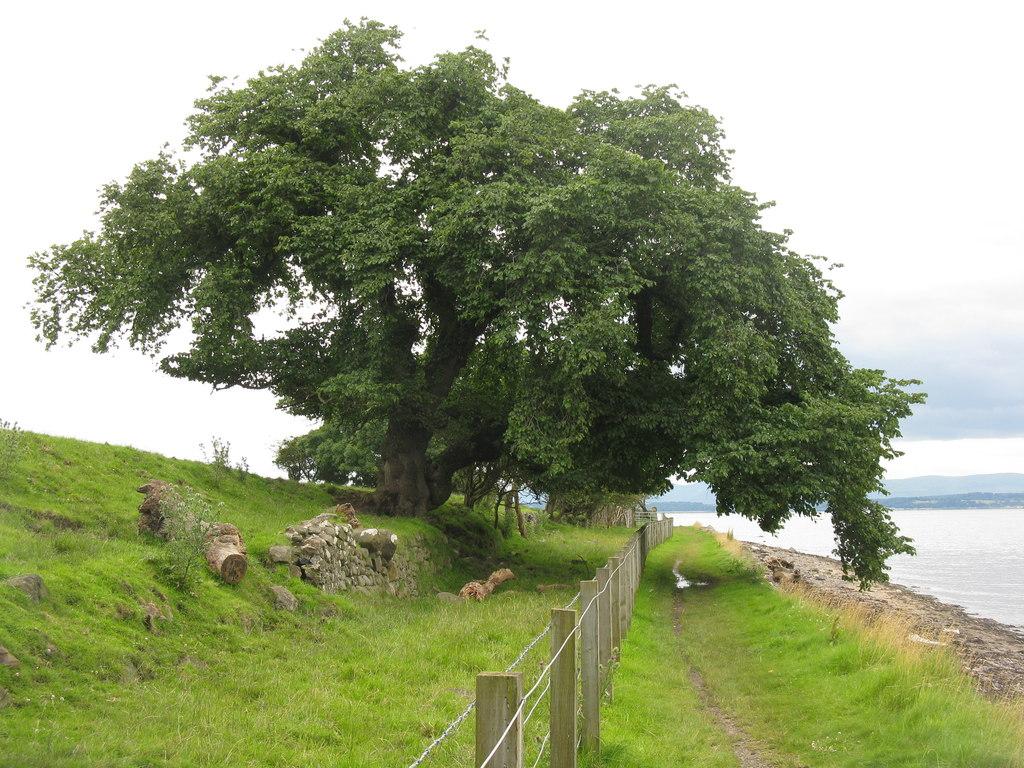
Elm trees are a part of many natural forests and they are also planted as landscape trees for their attractive foliage and shade. They can grow as large as 30 meters (100 feet) in height and around 20 meters (65 feet) in width. Elm trees are flowering plants that are hermaphroditic. It means that they have both male and female reproductive organs on a single plant.
Elm tree wood is well-known for its versatile properties. It is used to make boxes, baskets, furniture, hockey sticks among many other items. Elm tree wood is not only lightweight, but it is also very durable, tough and hard. Also, elm wood is very resistant to water, making it an excellent choice for building farm buildings and boats.
In this article, you will learn exciting elm tree facts, elm tree uses, and how you could identify an elm tree species by looking at its bark, leaves, and other features. So, let’s dive right in!
Elm tree facts
Elm tree leaves
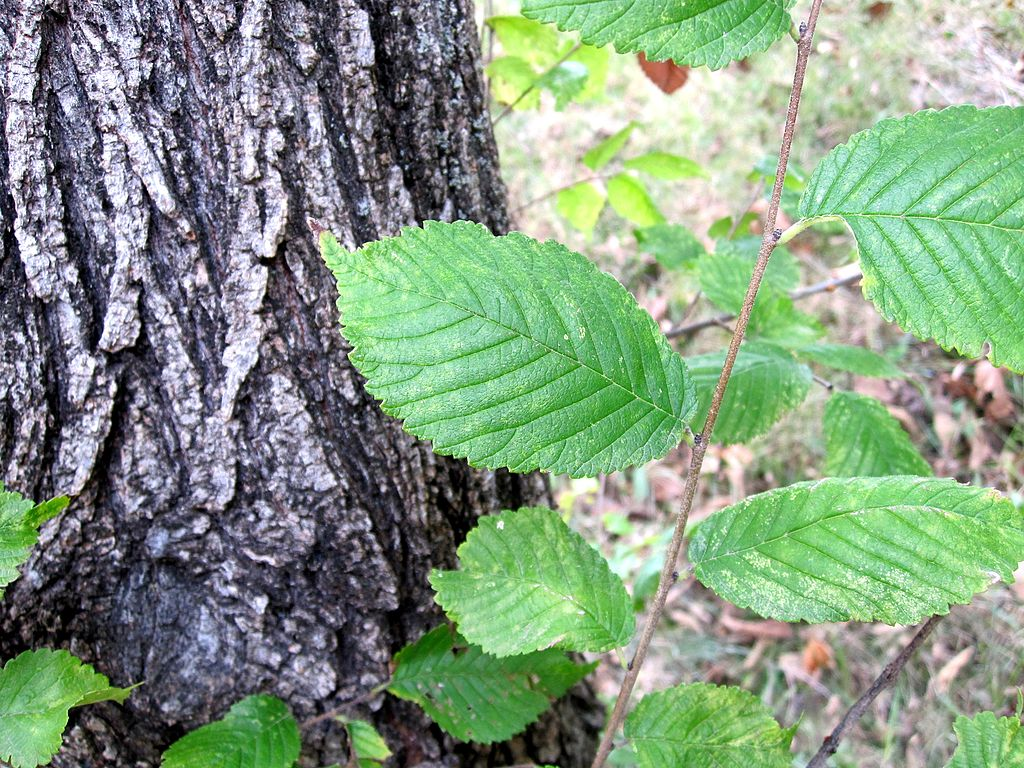
Elm tree leaves are oval or egg-shaped and have pointed tips. The leaves are doubly toothed, meaning the ‘teeth’ have ‘teeth.’ Also, they are lopsided, meaning one side of the leaf is smaller than the other. Most elm species have dark green leaves with bright veins spread throughout the matrix of leaves.
On average, the leaves of most species are 10 to 12 cm in length and 5 to 7 cm in width. Elm leaves grow in an alternating pattern. In this pattern, a new leaf will emerge on the opposite side to the last leaf but not from the same position.
Elm Tree Bark
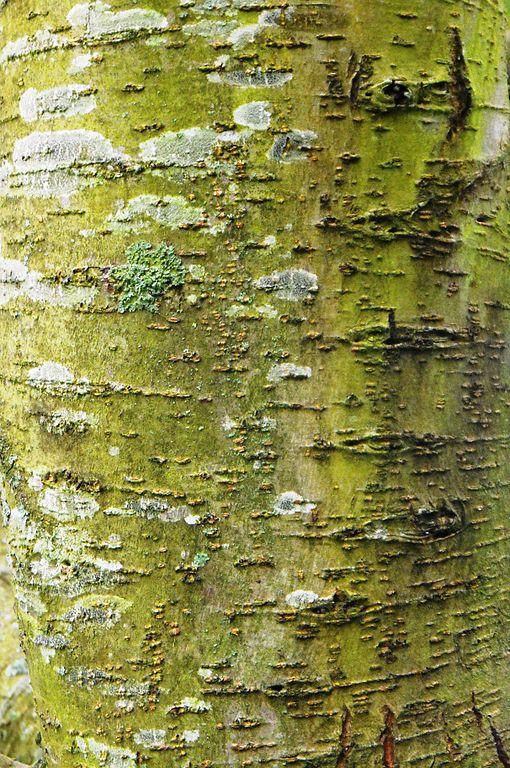
More often than not, the bark of the tree is flaky or scaly in appearance due to the presence of a large number of deep furrows in it. But some species such as the cherry bark elm tree and Wych elm have smooth bark instead of fissured bark.
These furrows run vertically along with each other through the length of the stem. Some fissures might also intersect with each other. The bark is dark gray but it becomes deeply grooved and silver-gray in older trees.
The bark can be easily broken off and in some species such as the slippery elm, there is a glue-like substance in the inner bark. Elm tree bark has been used extensively in traditional and herbal medicines to treat a number of diseases.
Elm tree seeds
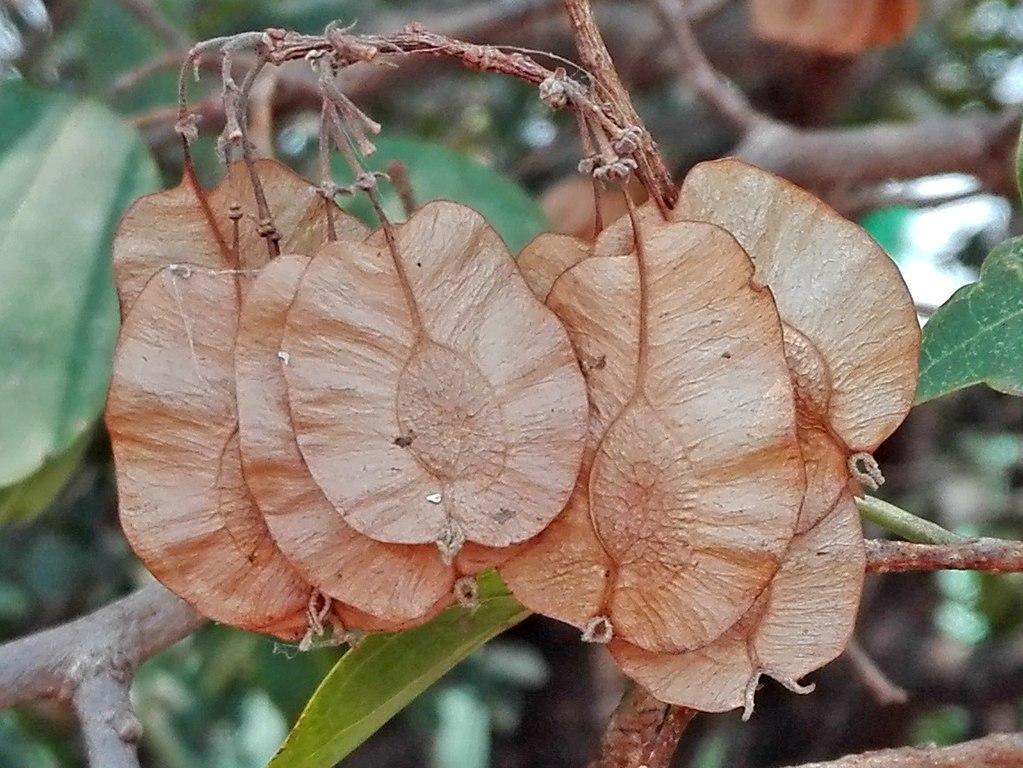
The seeds of elm are round and smooth. They are covered by a paper-like membrane that hooks at the top. The seeds are the size of a pea and they are encased in a thin ovular leafy sac of green color called “samara.”
The seeds develop just before an elm tree has produced leaves but there are so many of them that a seed-bearing elm looks like it has come into leaf already. On maturation, the color of the seeds changes from dark green to hay-like yellow-brown.
A large elm tree produces loads of these seeds that can cause a mess on walkways, driveways, and yards if not taken care of. According to Dale Carlon of the Meadows Water Authority, elm trees produce even more seeds when stressed.
Elm tree uses
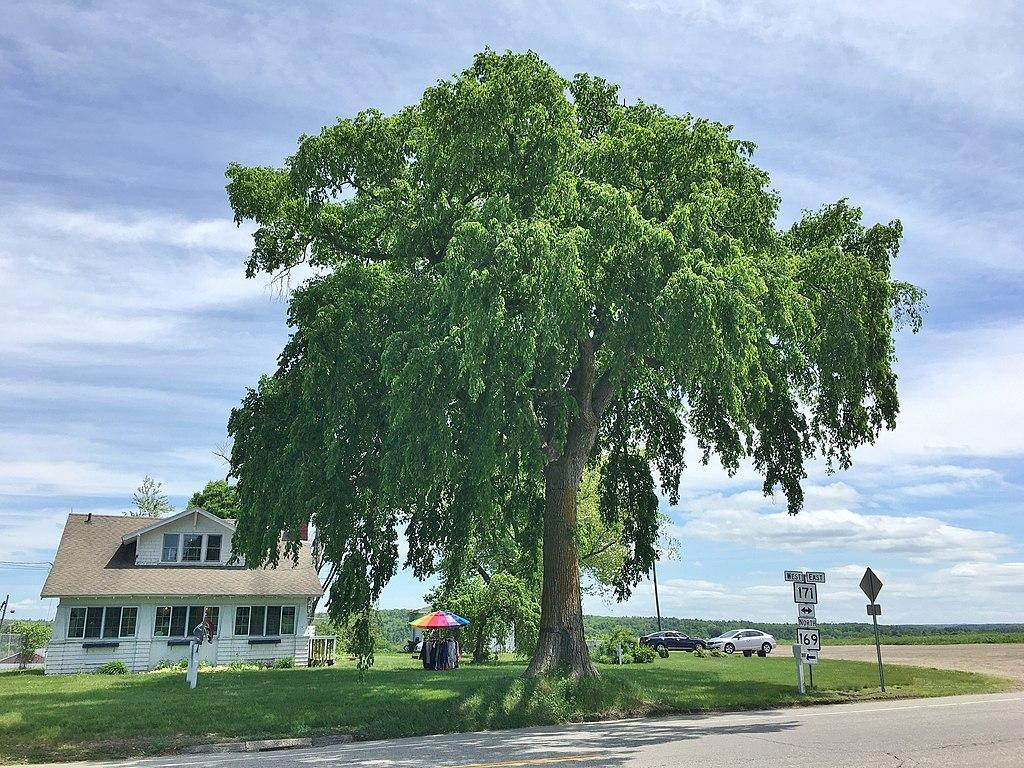
When it comes to planning trees in high-traffic places for landscape or ornamental purposes, elm trees are some of the excellent options. They have been planted extensively in public areas and roadsides because of their size and adaptability. In addition, elm has a wide and broad canopy, making it an excellent shade tree in parks and backyards.
A number of elm tree species are also very important to the timber industry. As already mentioned, elm wood is strong, durable and yet flexible and lightweight. So, it is excellent for making furniture, musical instruments, and general carpenter’s work.
Elm tree wood is also remarkably durable underwater. It is especially adapted for purposes that might require prolonged exposure to water. That is why it is used very extensively in making boats and ship keels. The inner elm tree bark is very tough. It is used to make mats and ropes. The young shoots of the elm tree and its leaves are also used as food for livestock in some areas.
Some species of elm are also used in herbal medicine. For example, Slippery elm has been used for centuries to heal wounds, burns, ulcers and inflammation. In addition, the mucilage obtained from slippery elm contains a number of antioxidants that provide it with numerous health benefits.
Elm tree diseases
Despite their durability, strength, might and size, elm trees are not immune to pests and diseases. For example, elm trees are incredibly prone to the Dutch elm disease. Two closely related species of fungi cause dutch elm disease. The spores of the fungi are carried by the elm bark beetle as it moves from tree to tree to feed on elm tree bark.

Three species of bark beetles are often linked with Dutch elm disease: the European elm bark beetle, banded elm bark beetle and native elm bark beetle. The disease starts with the withering of leaves and then progressively spreads to the rest of the tree.
The disease affects the elm tree bark very severely. When leaves have been affected very severely during extreme cases, the plant’s roots also die from starvation. After this, the entire tree succumbs to the disease.
Dutch elm disease was a prevalent problem during the last century. It especially affects the elms of European and North American origin including American elm (Ulmus americana) and slippery elm (Ulmus rubra). Asiatic elm species usually have a higher resistance to Dutch elm disease and can survive the infection for years. Examples of Asiatic elm include the Siberian elm (Ulmus pumila) and the Japanese elm (Ulmus japonica).
In response, some disease-resistant cultivars have been developed that are now widely cultivated. But elm plants are still prone to many other diseases, some of which are listed below:
| Disease | Symptoms | Cause/Pathogen | Management |
| Elm yellows | – Yellowing and wilting of leaves all over the crown of the plant – If cut, the phloem and xylem inside the stem are butterscotch in color and have a wintergreen smellPhytoplasmas- Remove infected trees as they not only spread elm yellows but also attract elm bark beetles which may carry Dutch elm diseaseLeaf scorch- Leaves appear burnt or scorched- Leaves fall prematurelyXylella fastidiosa- Leafhoppers and spittlebugs carry the pathogen. So, eliminate and avoid their presence | ||
| Black leaf spot | – Tiny, raised spots form on leaves | Stegophora ulmea | No control recommended |
10 Types of elm trees
Elm trees are native to Europe and Asia. However, they can grow anywhere as long as there is moderate rainfall and a temperate climate. In the subsequent paragraphs, we will try to explore some of the finest types of elm trees that are scattered throughout the world.
Head below to learn about the features and characters of different types of elm trees.
1. Cherry Bark Elm
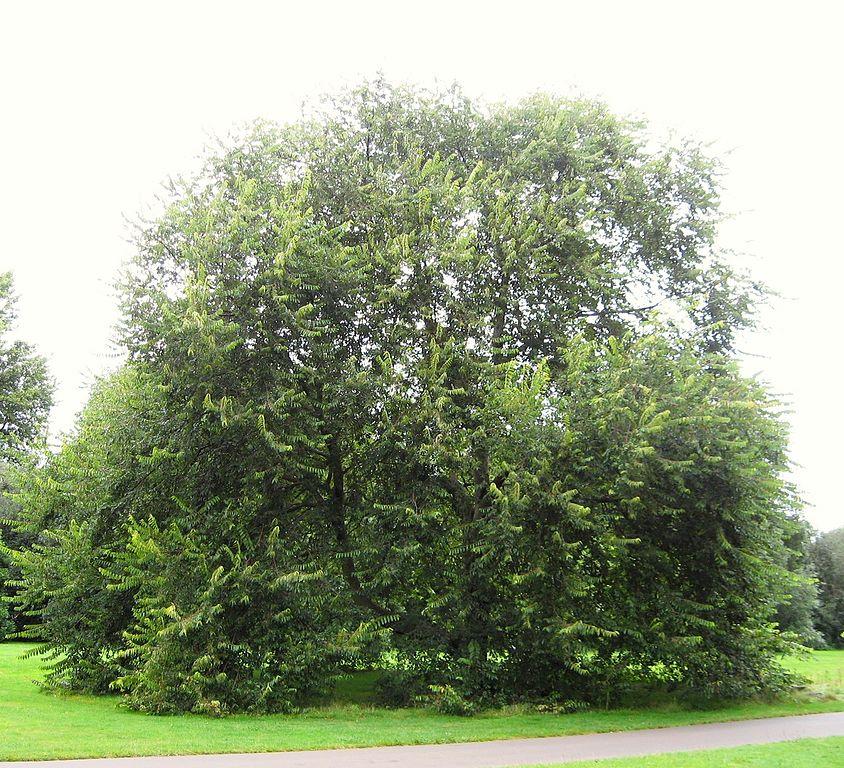
With some trees believed to live as long as 800 years and a lifespan of about 100 years on average, the cherry bark elm tree is bushy, large and sort of round in shape, just like a cherry. However, unlike most species of elm trees, cherry-bark elm trees have smooth bark. Also, its samaras are more elliptical than they are round.
The cherry bark elm tree is endemic to the valleys of Kashmir at elevations of 1500–2500 meters. However, it has become very rare in recent years due to its popularity as cattle food. Mature trees are now only found in shrines and temples where they are considered sacred.
Cherry-Bark Elm Tree Quick Facts & Identification Guide
| Scientific name | Ulmus villosa |
| Other names | Marn elm |
| Height | Up to 25 m |
| Commonly found | Eastern Asia, Himalayas |
| Flowering period | February to April |
| Cherry-bark Elm Bark | Smooth with bands of flaky bark |
| Cherry-bark Elm Leaves | Long oblong and bright green, 11 cm long, and 5 cm wide |
2. Cedar Elm
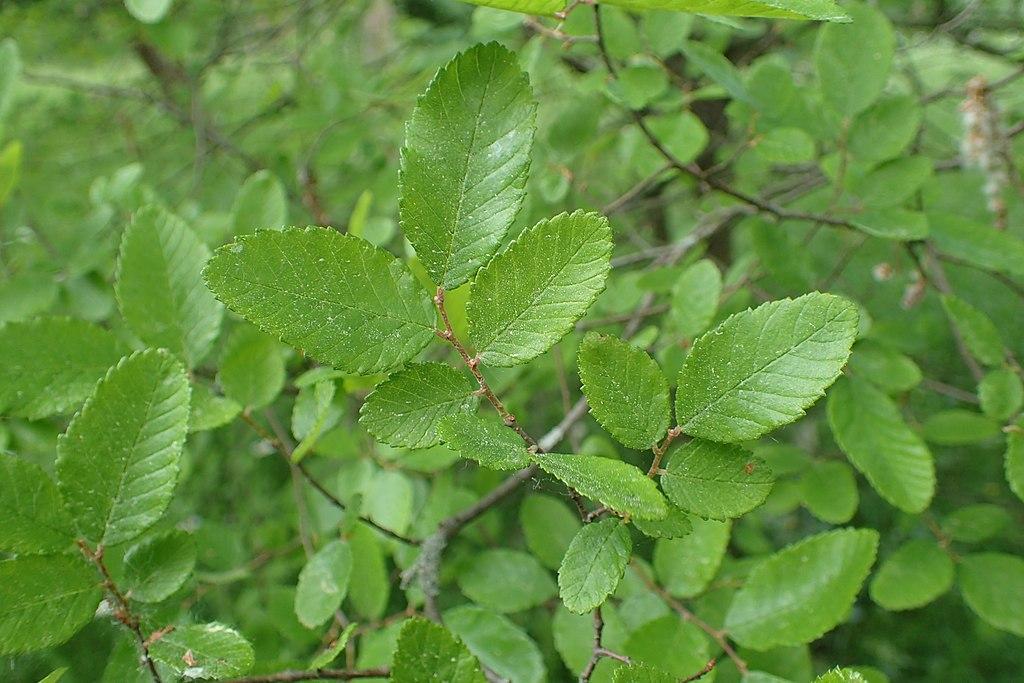
When it comes to picking a shade tree for a dry hot place, you cannot go wrong with a cedar elm tree. Not only does it have a thick canopy which makes it an excellent shade tree, but it is also a very hardy plant. It can tolerate drought and wet conditions equally well.
Cedar elms get the word “cedar” in their name because of their fondness to grow near junipers, sometimes known as cedars. They have the smallest leaves of any elm species in North America. Unfortunately, the cedar elm tree is quite susceptible to Dutch elm disease.
Cedar Elm Tree Quick Facts & Identification Guide
| Scientific name | Ulmus crassifolia |
| Other names | Texas cedar elm tree |
| Height | 20 to 25 m |
| Commonly found | East, South, and Central Texas |
| Flowering period | Late summer or autumn |
| Cedar Elm Bark | Scaly and gray, Medium fissuring |
| Cedar Elm Leaves | Small and oval, 5 cm long and 2 cm wide, stiff and rough to the touch |
3. Slippery Elm
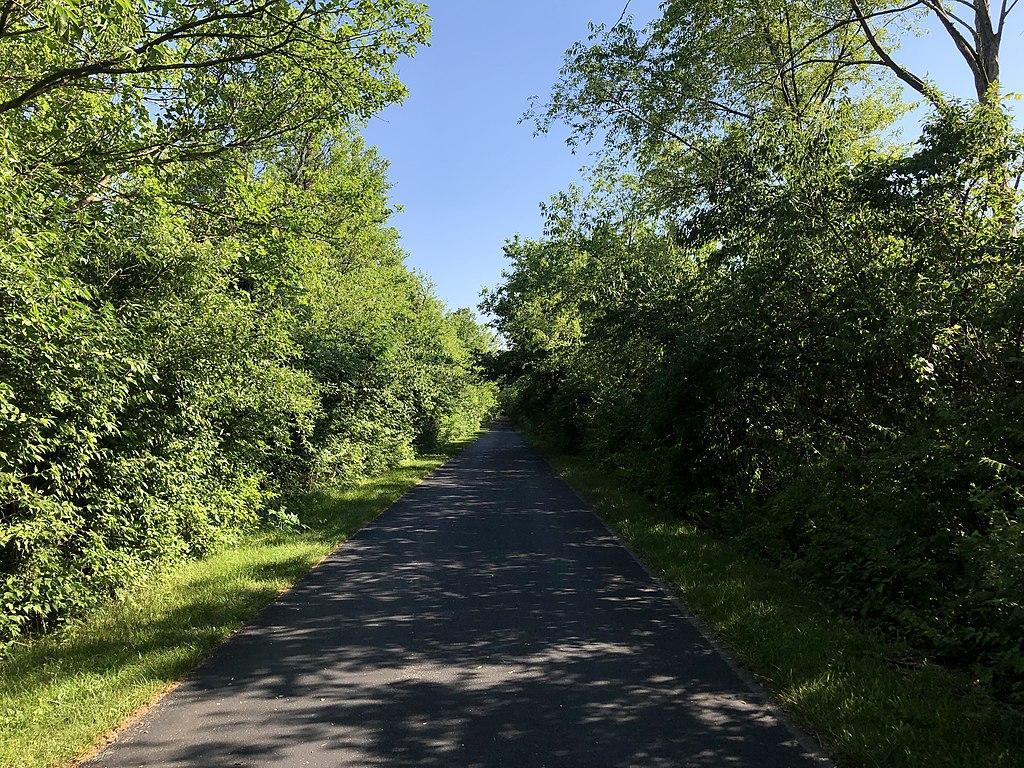
Slippery elm is a small deciduous tree that gets its name from the sticky secretion that is found in its inner bark. This sticky secretion has been used in traditional and herbal medicine for quite a long time. Slippery elm is commonly found in the forests and woodlands of Iowa.
The tree is not generally used for landscape and ornamental purposes because of its rough texture and its susceptibility to Dutch elm disease. Slippery elms are long-living deciduous trees that may live up to 200 years or even more. The epithet rubra in its scientific name alludes to its reddish inner wood.
Slippery Elm Tree Quick Facts & Identification Guide
| Scientific name | Ulmus rubra |
| Other names | Gray Elm, Red Elm, and Soft Elm |
| Height | 12 to 19 m |
| Commonly found | Central and southern United States |
| Flowering period | Spring or Winter |
| Slippery Elm Bark | Reddish-brown, long narrow fissures |
| Slippery Elm Leaves | Long obovate, rough upper side and smooth velvety undersideRed when young, dark green when mature, and yellow in autumn10 to 20 cm long |
4. Camperdown Elm
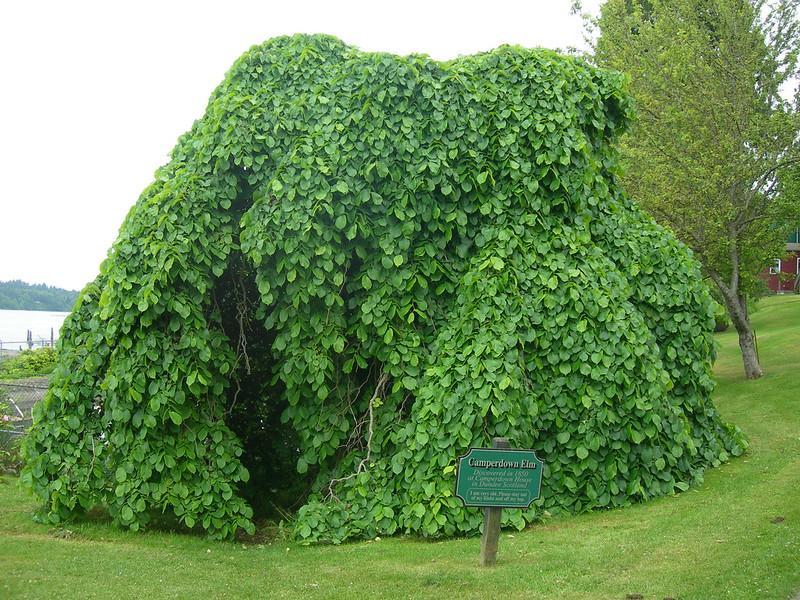
Camperdown elm tree is a weeping variety of the wych elm. Not only is it pretty enough to capture anyone’s attention, but it is also small enough to fit inside limited areas, which makes it an excellent landscape tree. Camperdown elm is a dense deciduous tree with dark green foliage that turns yellow during autumn.
Its branches are twisted and droop to the ground giving it a very weeping look which makes it very popular. Unlike other types of elm trees, this weeping elm has a flat canopy that can spread broader than its height. Overall, the plant has a very bold and coarse look that could be used in a range of landscape compositions.
Camperdown Elm Tree Quick Facts & Identification Guide
| Scientific name | Ulmus glabra ‘Camperdownii’ |
| Other names | Weeping elm |
| Height | 5 to 10 m |
| Commonly found | Scotland, United Kingdom |
| Flowering period | March to April |
| Camperdown Elm Bark | Grayish brown, moderately smooth |
| Camperdown Elm Leaves | Broad obovate, dark green, 8 to 16 cm, rough upper side |
5. Wych Elm
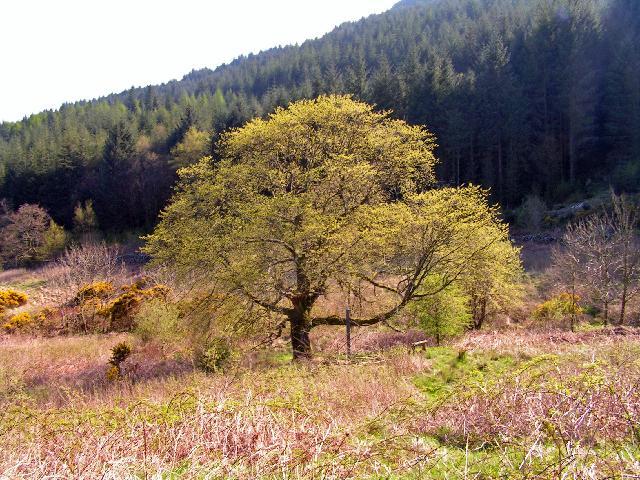
Wych elm has the widest distribution of any species of European elm. Wych elm tree is even found in some areas of Iran. It is a large deciduous tree that grows at elevations above 1400 m and prefers moist soils. Over the years, the Wych elm tree has gained popularity as a landscape tree because of its pretty purple flowers, towering appearance, and winged seeds.
Not only does the Wych elm tree looks pretty, but it is also very hardy too! The Wych elm tree is able to tolerate very high levels of atmospheric pollution. A Wych elm tree can live for as long as 400 years. Still, this majestic elm is rarely found as a mature tree nowadays because of the devastating effects of Dutch elm disease in the 20th century.
Wych Elm Tree Quick Facts & Identification Guide
| Scientific name | Ulmus glabra |
| Other names | Scot elm |
| Height | Up to 40 m |
| Commonly found | North and west of the UK and most of Ireland |
| Flowering period | Early Spring |
| Wych Elm Bark | Grayish Brown, smooth when young, develop fissures after 20 years |
| Wych Elm Leaves | 7 to 16 cm, lime green with a long pointed tip |
6. David Elm
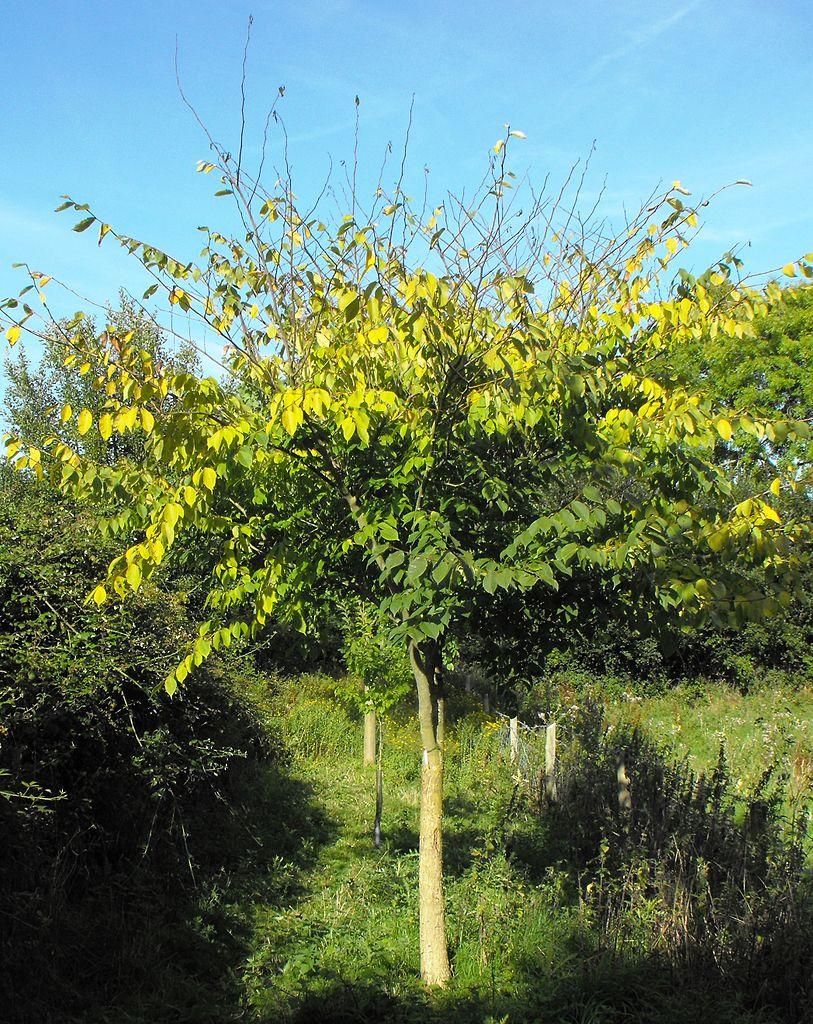
The David elm tree was first described in 1873. It is a small deciduous tree that is found along the streams at elevations of up to 2000 to 2300 meters. The tree grows in wetland areas and has difficulty growing outside of its native habitat.
But the tree has served a very vital role as a parent to many elm tree cultivars that are resistant to Dutch elm disease. Not only that, but these elm trees also seem to be very resistant to elm yellows. Even though David elm trees look very similar to American elm, they are notably smaller. Maybe that is why it is also referred to as a smaller version of American elm by some!
David Elm Tree Quick Facts & Identification Guide
| Scientific name | Ulmus Davidiana |
| Other names | Father David elm |
| Height | Up to 15 m |
| Commonly found | China, Japan, Korea, Mongolia, Siberia |
| Flowering period | Early spring |
| David Elm Bark | Ash gray, diamond-shaped fissures, spongy when young |
| David Elm Leaves | Obovate to elliptic, 10 cm long and 5 cm wide, rough upper surface |
7. Chinese Elm
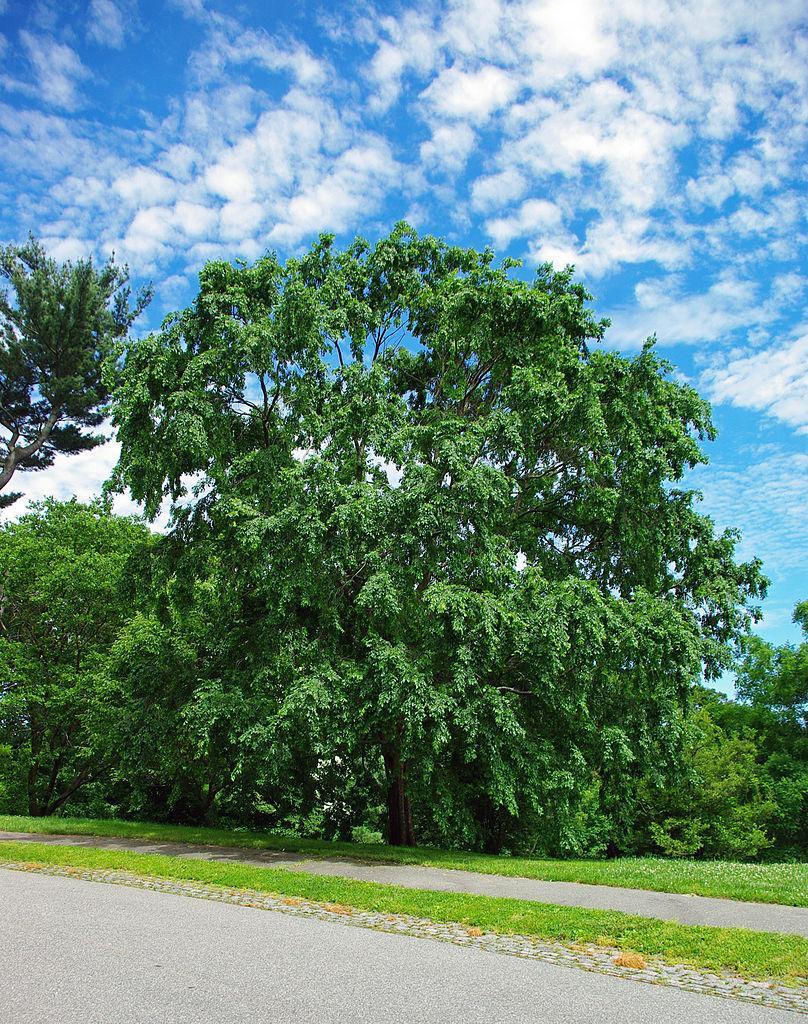
The Chinese elm tree is a variety of semi-deciduous trees. They have a bushy crown atop a slender trunk. The Chinese elm tree is very popular as an ornamental tree as well as a shade tree. The Chinese elm tree is a trendy choice for bonsai as well as it manages to grow successfully, even if heavily pruned.
Chinese elm tree has good resistance against Dutch elm disease, elm leaf beetle, and the infamous Japanese beetle. Unfortunately, it is often confused with short-lived, disease-ridden, and weak-wooded Siberian elm, which has earned the Chinese elm tree an undeserved bad reputation over the years, despite its splendor.
Chinese Elm Tree Quick Facts & Identification Guide
| Scientific name | Ulmus parvifolia |
| Other names | Drake Elm, Lacebark Elm |
| Height | 10 to 18 m |
| Commonly found | China, Korea, and Japan |
| Flowering period | Fall, Spring, and Summer |
| Chinese Elm Bark | Flaking dark gray bark with distinctive pink patches underneath |
| Chinese Elm Leaves | Small, leathery, single-toothed margins, 5 cm in length |
8. European White Elm
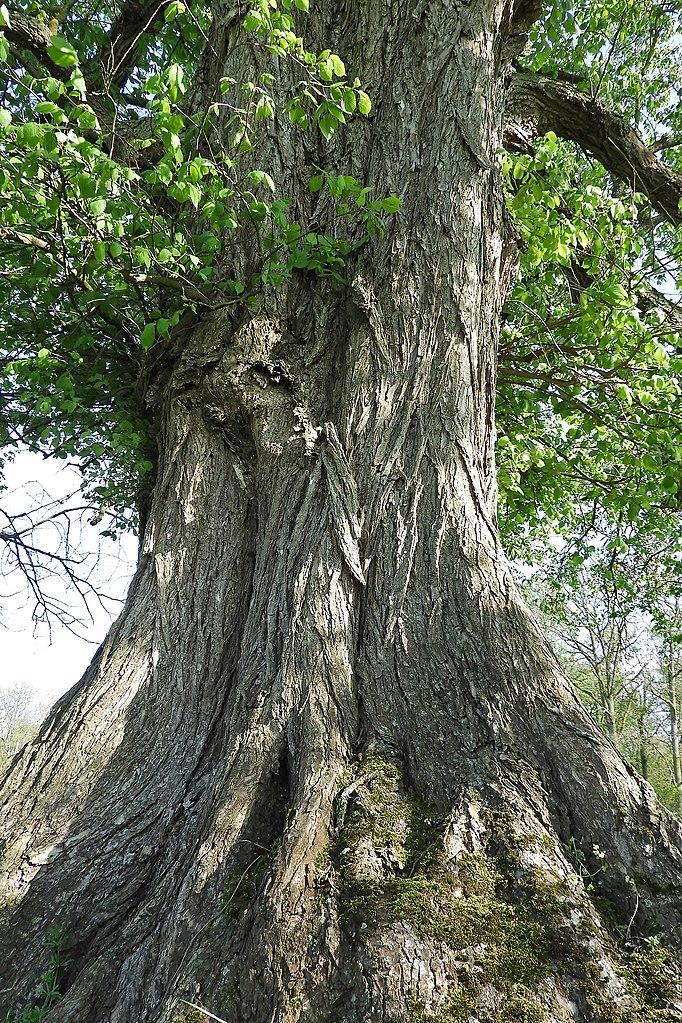
The European white elm is a very hardy plant. It is one of few elm tree species that can survive prolonged waterlogging and anoxic (low oxygen) soil conditions. Unlike many other elm species, its timber is not considered very good. However, European white elm has long been used in towns and on roadsides because of ornamental value, tolerance, and fast growth.
Also, it is the only European white elm tree that is resistant to Dutch elm disease out of the three native elm species. One of the most distinctive features of the European white elm tree is the fact that it is one of the first elm trees that lose their leaves in fall.
European Elm Tree Quick Facts & Identification Guide
| Scientific name | Ulmus laevis |
| Other names | Fluttering elm, spreading elm, and stately elm |
| Height | Up to 30 m |
| Commonly found | Central and Eastern Europe |
| Flowering period | Early Spring |
| European Elm Bark | Whitish-gray, smooth when young, scaly, and slightly fissured as tree ages |
| European Elm Leaves | 7 cm long and 7 cm broad, ovate, slightly hairy on the underside |
9. Siberian Elm
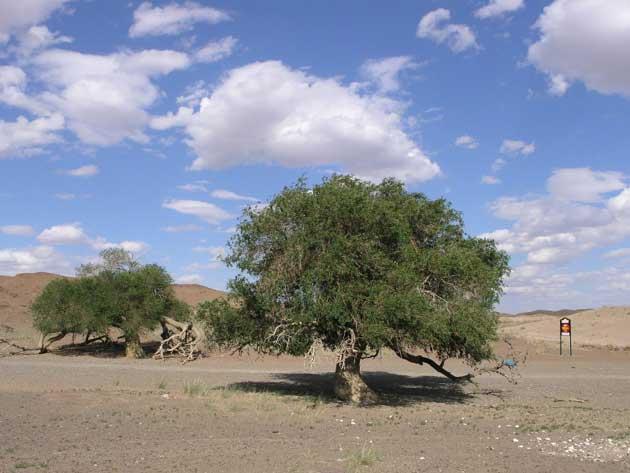
Siberian elms are small deciduous trees that have become a bit of a problem in North America over recent years. The Siberian elm tree is now declared an invasive species in the United States. It is able to grow in moist and nutrient-poor soils and can quickly take over and dominate prairies in just a few years.
The Siberian elm tree is often confused with the Chinese elm. Also, the Siberian elm tree can cross-pollinate with native species making identification difficult. But the Siberian elm tree can be identified by its winged seeds, tiny red flowers, and brittle branches that break very easily.
Siberian Elm Tree Quick Facts & Identification Guide
| Scientific name | Ulmus pumila |
| Other names | Dwarf elm, Asiatic elm |
| Height | Up to 25 m |
| Commonly found | Central Asia, Siberia, Mongolia, Tibet, northern China, Northern Kashmir, and Korea |
| Flowering period | Spring |
| Siberian Elm Bark | Gray or dark gray with irregular shallow furrows |
| Siberian Elm Leaves | Shiny dark green with serrated margins, less than 8 cm |
10. American Elm
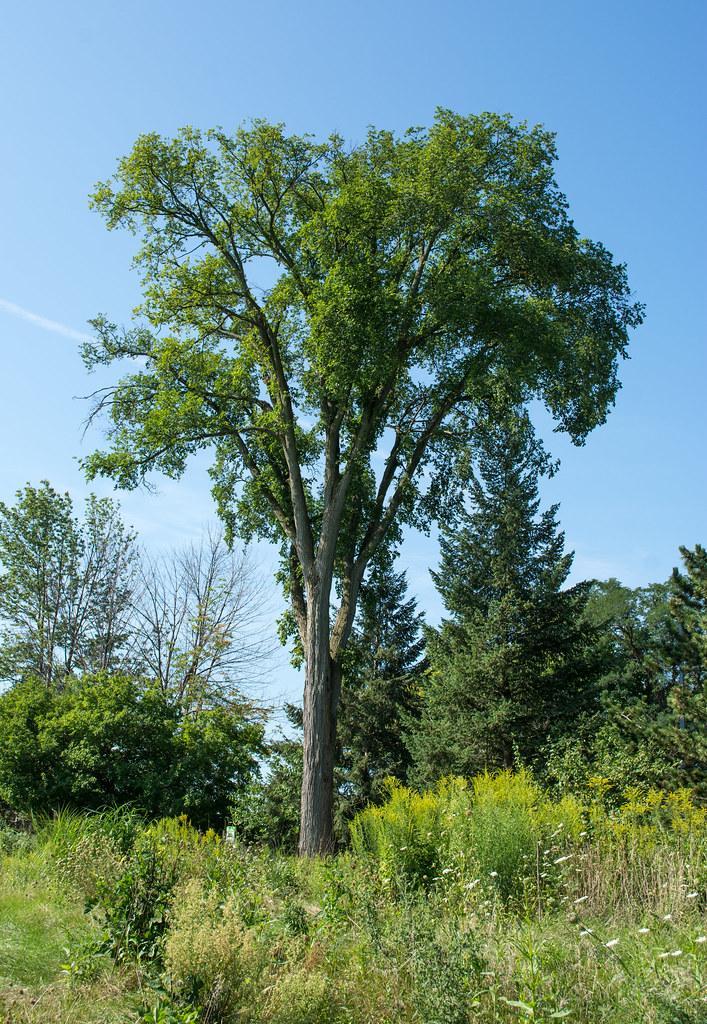
The American elm tree is a classic! It is the state tree for both North Dakota and Massachusetts. It is a tall and wide shade tree with an umbrella-like canopy that can spread as much as 20 meters wide.
The American elm tree is a favorite of the timber industry as its wood is hard and durable. American elm is an adaptable plant, but it grows best in moist, well-drained soils and full sun to part shade.
The American elm tree once occupied every corner of American cities but then lost its popularity due to its high susceptibility to Dutch elm disease. Even though the disease killed most of these large elms in many states, American elm is still a component of woodlands in many.
American Elm Tree Quick Facts & Identification Guide
| Scientific name | Ulmus americana |
| Other names | Water elm, White elm |
| Height | 30 to 40 m |
| Commonly found | eastern North America |
| Flowering period | Early spring, before leaves appear |
| American Elm Bark | Ashy gray, flat-topped ridges separated by diamond-shaped fissures |
| American Elm Leaves | Leathy green, Doubly serrated, elliptical to oval |
Elm tree FAQs
How do you identify an elm tree?
Even though variations exist, most elm species have tall and straight trunks. Branches grow upward, forming an arch shape and the canopy of the tree is vase-like overall.
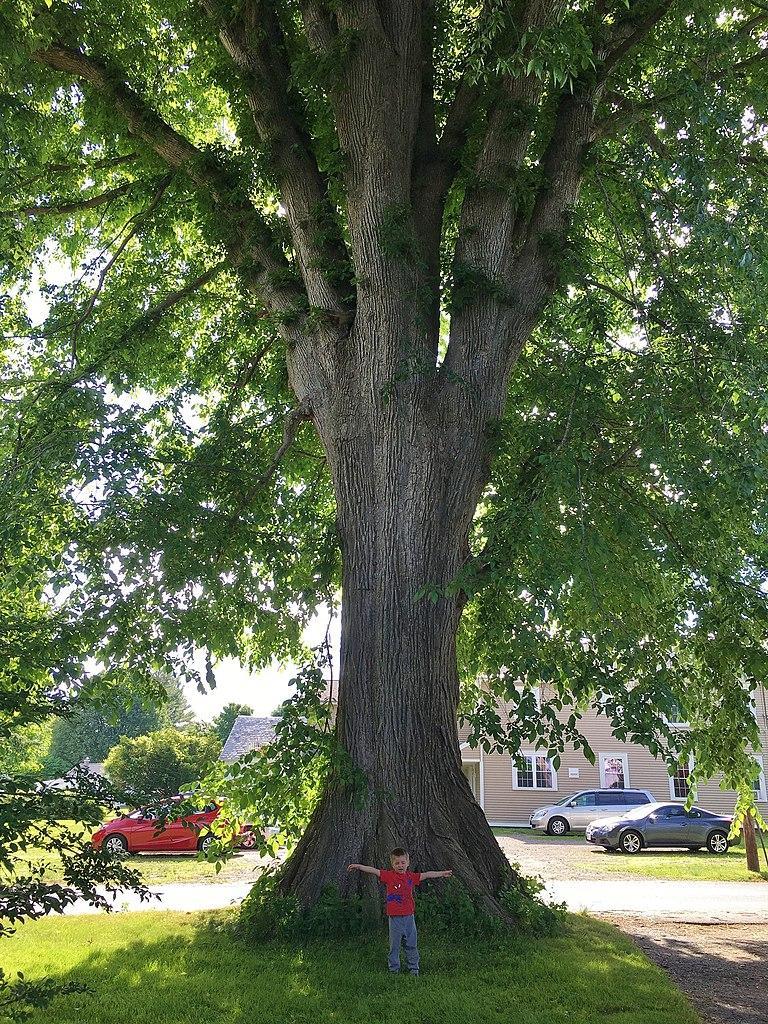
What does the leaf of an elm tree look like?
The leaves of elm are oval or egg-shaped with a pointed tip. Leaves’ margins are doubly-serrated, and the base of the leaf where it connects with the stem is asymmetrical. The underside of the leaf is rough because of the raised veins.
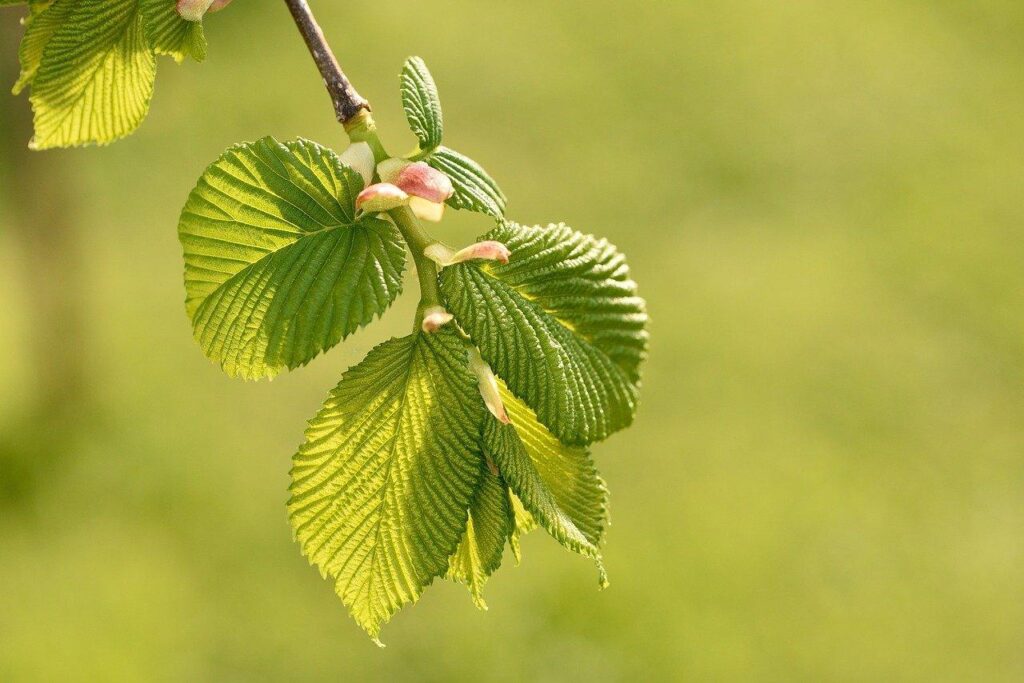
What does the bark of an elm tree look like?
The bark of elm is, more often than not, quite fissured. The bark can be easily broken off with bare hands. The bark is dark gray at maturity but becomes ash gray or silver-gray during old age.
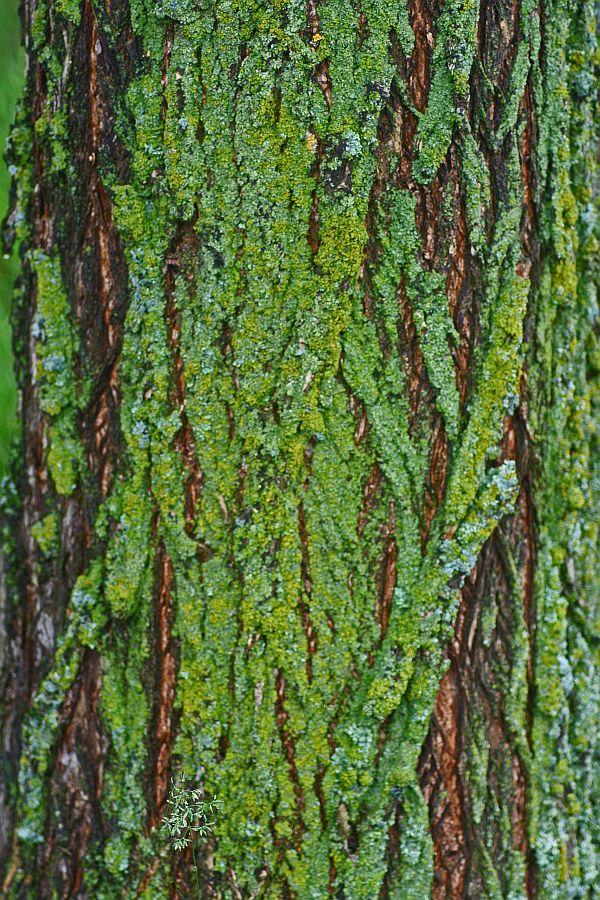
You can look to our guide above, if you want to learn about identifying a particular elm species using its distinctive features.
Are there any elm trees left in the US?
There once were as many as 200,000 trees of just American elm in Denver, US. Today, only 3000 are left! This is because elms were killed in huge numbers during the last century throughout the US due to the Dutch elm disease.
The disease is caused by a fungal infection that is spread by elm bark beetles. It quickly took over and killed thousands of mature trees. But all hope is not lost; there are still a few patches of elm left here and there in the US. Also, Dutch elm disease-resistant cultivars have been introduced in many places to avoid any such future scenarios.

How long do elm trees live?
The age span varies from species to species, but most elms can live almost always longer than a hundred years. The oldest known samples are believed to be nearly 800 years old.
But unfortunately, this oldest elm tree has also succumbed to Dutch elm disease, and it is now slowly dying. The disease can reduce the lifespan of an elm very significantly. For example, the life expectancy of an American elm was almost 400 years before 1930. But after the disease emerged, it has now been reduced to 150 years on average.
How big do elm trees get?
Have you ever heard the phrase, “just plant and watch it grow”? It is definitely true for the elm. Most elms are capable of growing as much as 3 feet in a single year.
On average, most species of elm grow as long as 60 to 80 feet, but some exceptional plants can grow as long as 110 feet and with a canopy width of around 80 feet.
How do you tell the difference between ash and elm trees?
The main difference between elms and ash plants lies in their leaves. The elm leaves are what botanists call “simple leaves.” It means that each leaf arises from its own stem.
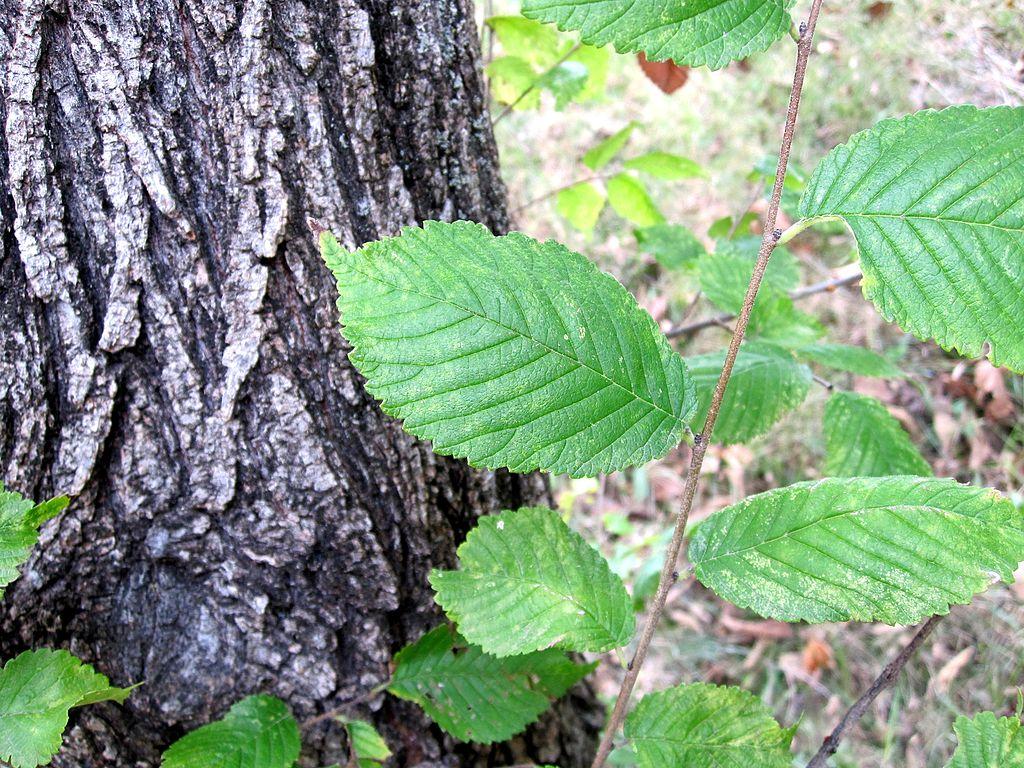
Whereas, ash trees have compound leaves. In compound leaves, many leaves arise from a single branch or stem. Also, elm trees grow relative to each other in an alternative manner. Whereas, the leaves of ash emerge directly in front of each other.
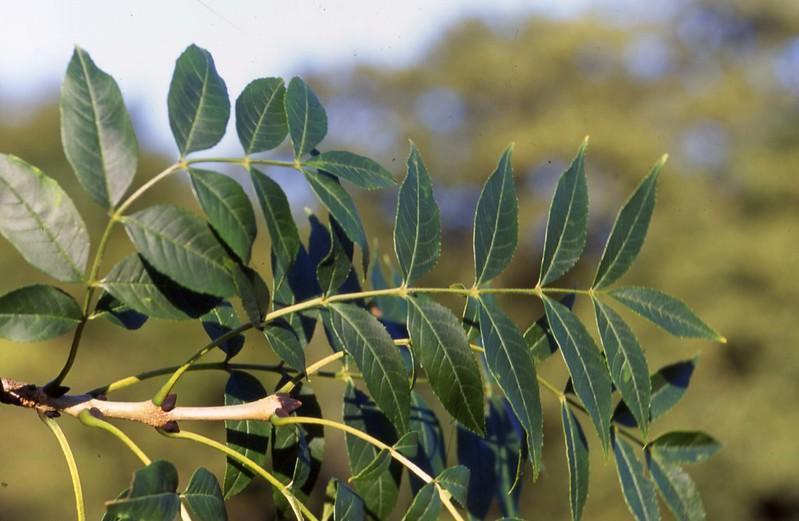
Where are elm trees found?
Elm trees are spread very widely throughout the northern hemisphere. They inhabit the tropical and temperate regions of Europe, Asia, North America, the Middle East, and the far east. Elm trees are a significant component of many types of natural forest systems worldwide.
In the United States, the iconic American elm spans all across the eastern US and some seven provinces of Canada as well. In nature, the American elm tree can be found in bottomland forests, swamps, and in areas with nutrient-rich soils. But some other elm species are highly adaptable and can survive in adverse conditions and nutrient-poor soils.
Sources for further reading
- How to identify an elm tree. (2022). Retrieved 17 March 2022, from https://www.alberta.ca/how-to-identify-an-elm-tree.aspx
- Dutch elm disease. (2022). Retrieved 17 March 2022, from https://www.apsnet.org/edcenter/disandpath/fungalasco/pdlessons/Pages/DutchElm.aspx
- The last elm. (2012). Retrieved 17 March 2022, from https://now.uiowa.edu/2012/03/last-elm
After learning different types of elm trees, make sure to read our other articles about other kinds of trees:
Shrouded in Mystery: The Ultimate Guide to Mystic Trees
La Naturaleza es Hermosa! The Ultimate Guide to Mexican Trees







